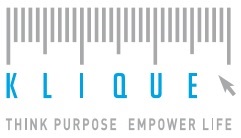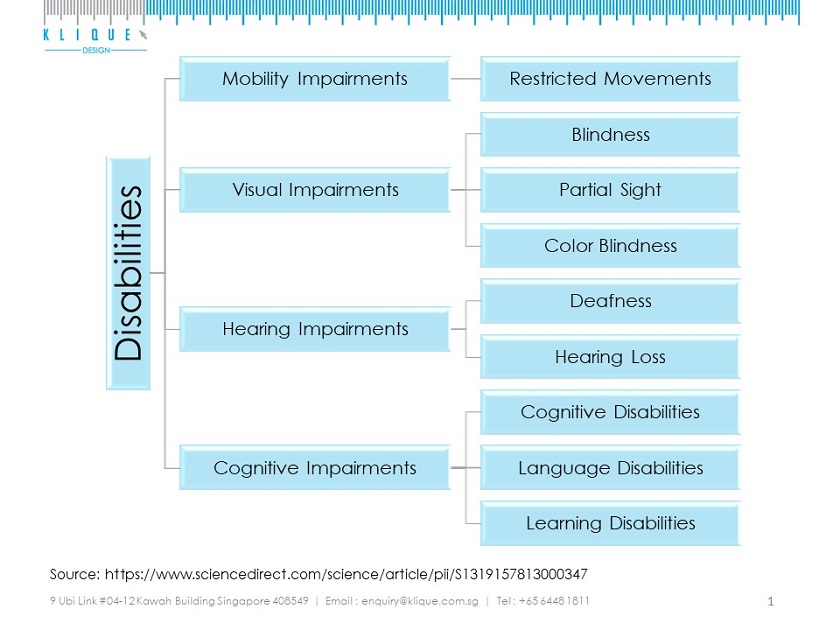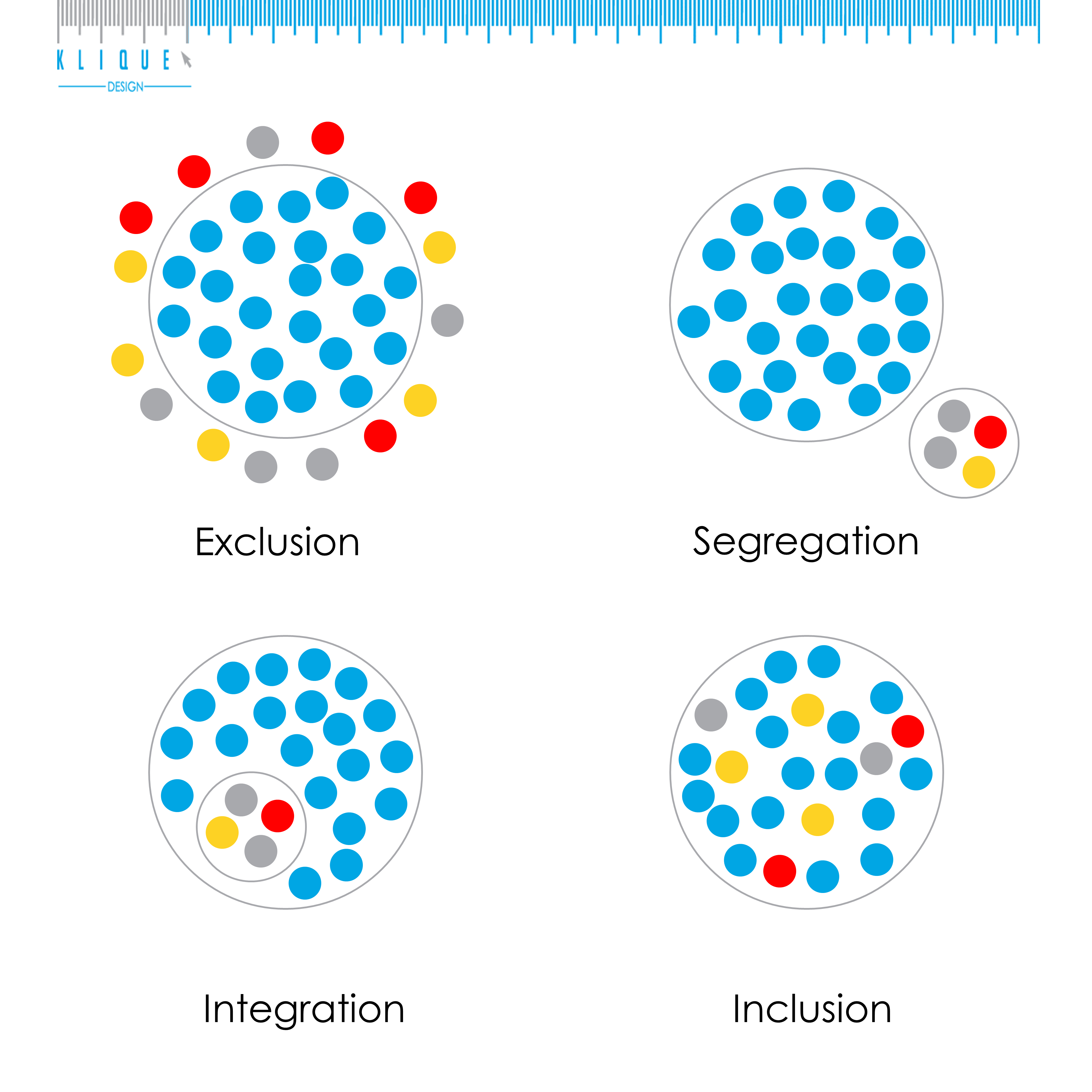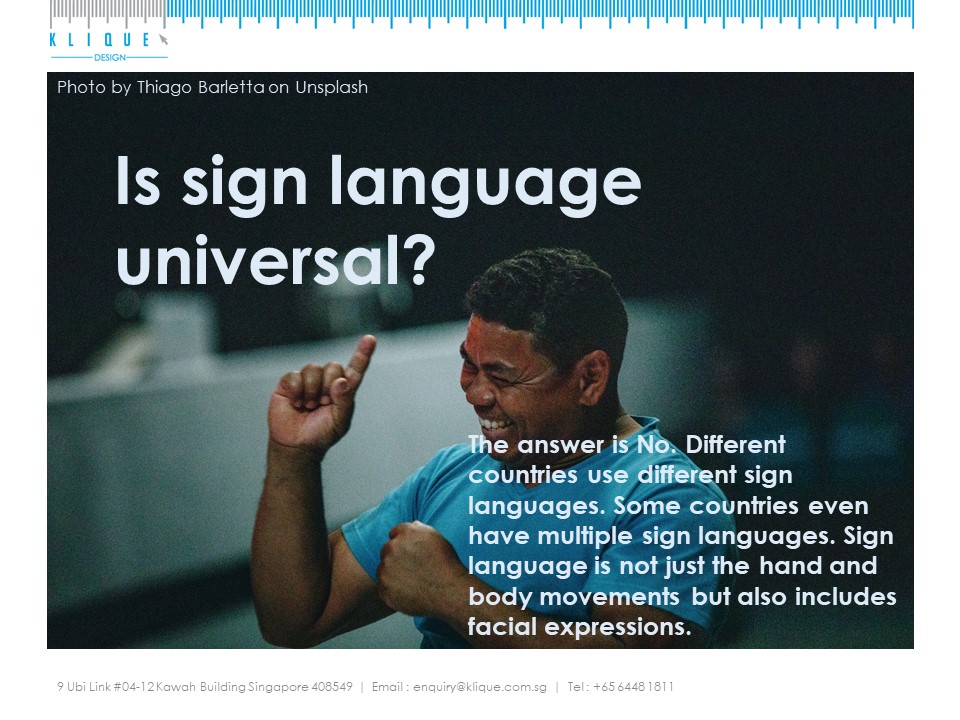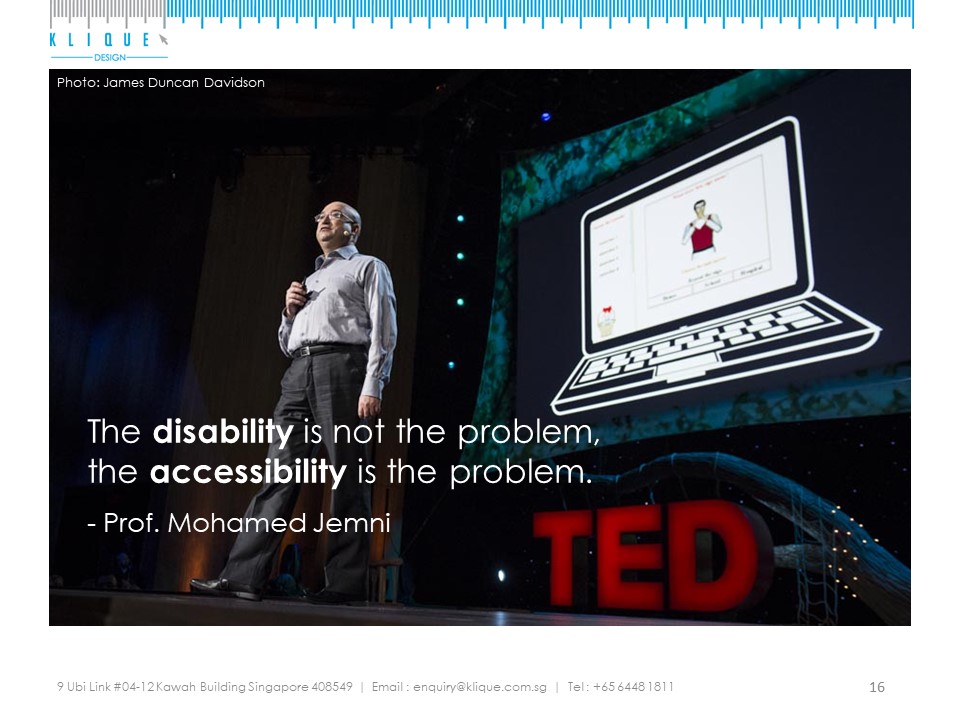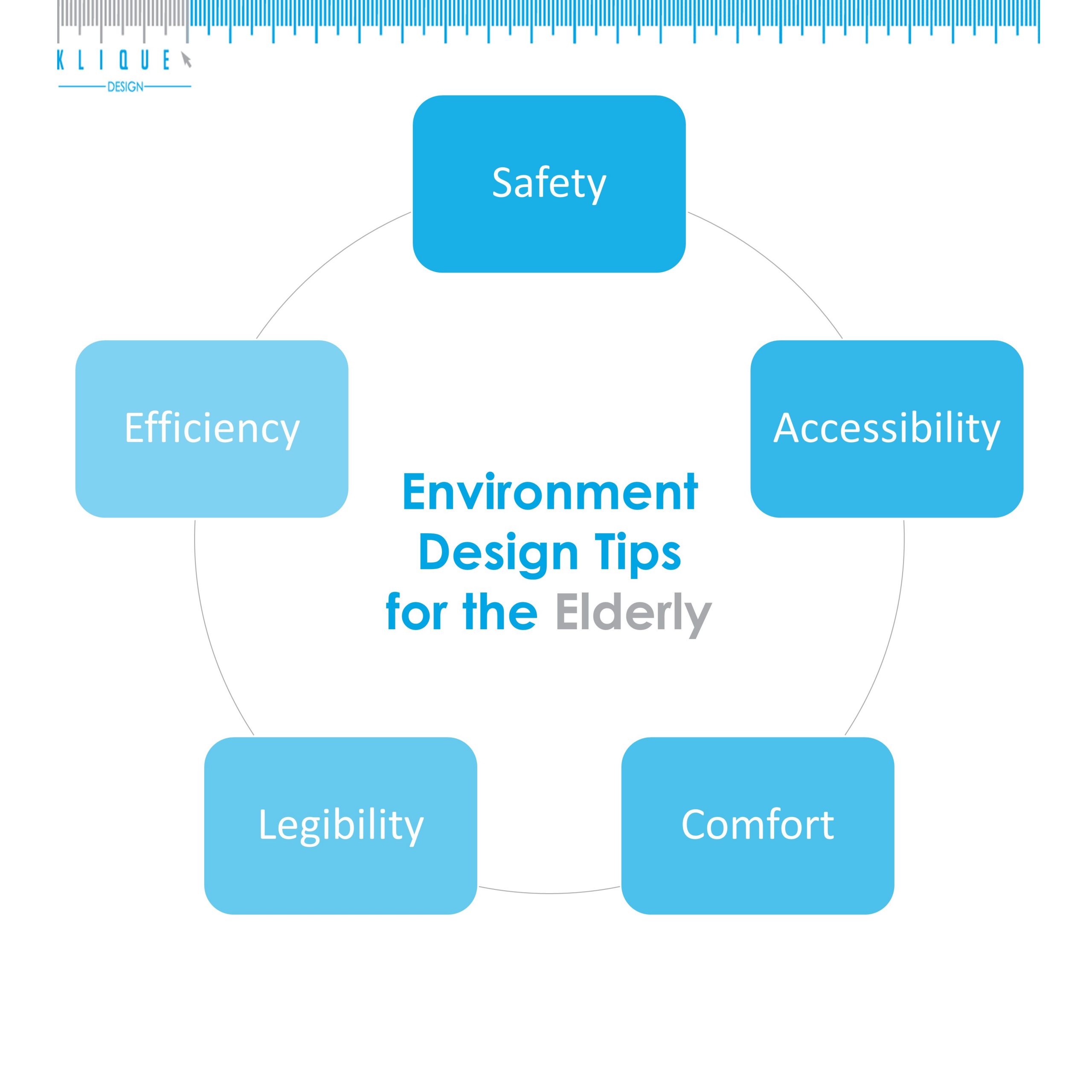 The 5 principles apply to all environment design including for the elderly:
The 5 principles apply to all environment design including for the elderly:
1. Safety
The environment should not cause hurt, physical injury or loss to elderly.
2. Accessibility
The environment should be easily accessible to elderly with varied disabilities.
3. Comfort
The environment should be comfortable and provide a sense of An Le 安乐 (“peace and happiness” in Mandarin). The environment should not make elderly feel anxious, frightened or upset.
4. Legibility
The environment should be easily understood and discovered by elderly with various disabilities.
5. Efficiency
The environment should be designed and organised such that elderly can get from one point of service to another effortlessly and in a timely manner.
Source: SingHealth
